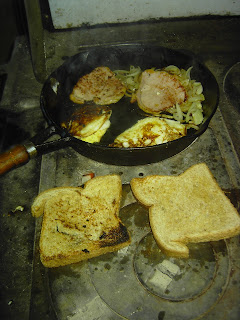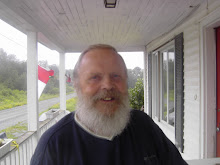Sharing Through the Internet
Today two ideas have come together and been dividing my attention. They are: today is the 40 anniversary of the "creation" of the Internet; and, musical delights they are having in Toronto this week, focused around the presentation of the Glenn Gould Prize to Jose Antonio Abreu.
The moment of the creation of the Internet was the successful Login on between two computers from UCLA to Stanford Research Institute. http://www.earthtimes.org/articles/show/292079,lo-it-began-internet-founder-recalls-first-message--feature.html
Leonard Kleinrock has spend a career at UCLA. He was there at the beginning It was his theory of packets that was used to transmit information over the Internet. http://www.lk.cs.ucla.edu/index.html
It was called the ARPANET but it was the beginning of a series of developments which developed what came to be know as the INTERNET. http://www.walthowe.com/navnet/history.html http://www2.macleans.ca/tag/jose-antonio-abreu/
What a wonderful thing it has become as a resource for a wide range of activities from the frivilous to the profound. For me, it has come to be a source of pleasure to write a small personal blog which allows me to share ideas and friendship with a small circle of friends who have come to mean more to me that I would have predicted before I came to know them through cyberspace. It has also become a seemingly bottomless source of imformation on ideas I find interesting intellectually stimulating. I just love researching any and all ideas that come to my attention or just pop into my head. I no longer have to laboriously spend hours going through books in a library or or read a series of Encyclopedia articles following connections mentioned in each. It also has largely replace for me letter writing and even allows me to chat frequently to special people as if they were in the room. For others, I am sure it has other important aspects: online banking, seeking medical information, looking for government forms to fill out, play games, watch movies, download music connect telephones, sell and purcxhase items or even enjoy erotic stimulation. It certainly has become a wonderful part of my life and the lives of countless and growning numbers of people around the World.
I have also been thinking how fast the Internet has become so important. My son was born the year of the creation of the Internet. The personal computer and the Internet was not really available to me until after I graduated from University and worked several years. I was reluctant to embrace it and only did so because I had an old one given to me. It now is almost a necessity. It certainly makes living in a remote place a lot less isolated.
The radio for me is my first line of information as to what is going on in the World while the Internet is where I find in depth information about some of what I learn.
This week I learned that Jose Antonio Abreu was being awarded the Glenn Gould Prize of $50,000 in Toronto. Well who is he? I was first tweeked to find out when I learned he was from Venezuela. I have been following the politics of Venezuela and emailing with a Venezuelan friend for several years. He is the founder of a wonderful music program in Venezuela , Le Sistema (the system).
Hundreds of thousand of young people in Venezuela are involved in orchestras learning to play music. Classical music as well as popular music is no longer the prerogative of the well educated elite in that country. It belongs to young people and their families all across the country. You have to understand that Venezuela is a country where 80% of the people are poor, and half of them are in abject poverty. So while 20% live in relative luxury comparable to the upper middle class and the wealthy in North America the vast majority struggle living in the countryside or increasingly live in the barrios (slums) around the cities. (My friend in Venezuela told me that she and her friends never go into the barrios. It reminded me of white people who used to tell me they never went into the black community in the US) Many of the children involved in the music program founded by Dr Abreu are from the barrios.
The following is a wonderful statement by Dr. Abreu after he was awarded the TED award. I urge you to listen to it all if you are at all interested in the education of children and social transformation through musical education. What he has done around music could be done around literature, art or even science. It reminds one of what opportunities we may have lost in North American with the decades of cutting back on music and art education in the schools.
The TED prize is $100,000 plus one wish. At the end of this video the last remarks were Dr Abreu's wish. Briefly, it was a wish that his music program in Venezuela could be spread to other countries. It seems his wish is being granted. There is an effort underway to establish El Sistema in the US http://elsistemausa.org/ I suspect this week in Toronto there will be an effort to establish El Sistema in Canada.
There are a number of activities this week honouring Dr Abreu. On Thursday, the greatest event will be at the Rogers Centre when the Venezuelan Bolivar Youth Orchestra will perform for 14,000 school children. The musicians and the students will then have an opportunity to meet and interact. http://www.cbc.ca/arts/music/story/2009/10/23/glenn-gould-prize.html?ref=rss
The orchestra will be lead my the "greatest young conductor" Gustavo Dadamel who is now with the Los Angeles Philharmonic Orchestra. He is a product of Le Sistema in Venezuela. He is an exciting conductor and an inspiration to young and old alike.
Watch this video as a taste of the exciting performance he and the youth orchestra put on. This is a performance at the 2007 PROMS Festival in Britain, a classical music festivals that has been a part of the music scene in Britain since 1895.
I hope you found this as exciting as I did. I might even become a music fan. The Internet makes it possible for me to find out about these two men and the Le Sistema program in Venezuela and to share it, and my excitment, with you.
The Internet has made profound differences in our lives in just a short time.












![[thinkingblogger.jpg]](https://blogger.googleusercontent.com/img/b/R29vZ2xl/AVvXsEhd9OJMeQzSRU2nO1UwIYEiYq7Fy8kqyJou32tkxFyT5DF7GZKLPBVzTtUsTFfGkc6_eQomd-V7nrSg-JEGTRZS378_-eJNQsvb0GIC23MStmn9e0sFTlq_xZ4ZID58dzqFKGXb/s1600/thinkingblogger.jpg)










 Add The Indicator To Your Site
Add The Indicator To Your Site

 Free Typing Tutor
Free Typing Tutor